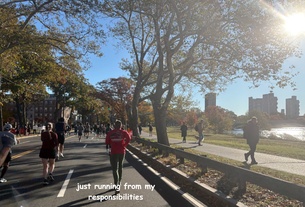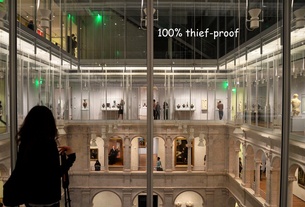{shortcode-7ce8575a60e0eda58cf8049c01840801926fdc26}
Two years ago this month, Harvard and MIT launched edX, a non-profit virtual learning platform to educate people across the globe and shed light on how students learn. To date, the joint venture has attracted dozens of partners, from top-tier research universities to international organizations, as well as more than two million users. Yet questions about the efficacy of online courseware, edX’s rapid growth, and the platform’s financial sustainability remain.
Anant Agarwal, an MIT computer science professor who has served as CEO of edX since its establishment, sat down with The Crimson to recount the challenges of creating courses for an online learning environment, discuss the non-profit’s business model, and speculate about what the future might hold for edX. The interview has been edited for clarity and concision.
The Harvard Crimson: At the time of edX’s launch, there was a lot of speculation into what the platform might look like and what it might do to transform higher education. What was your vision for edX at the beginning?
Anant Agarwal: So when we started edX, our vision for edX had three legs to the stool, so to speak. The first part of our mission was that we wanted to increase access to learners all over the world, millions of students everywhere, and with our very first course, we reached 155,000 students in 162 countries, and that gave us initial confidence that maybe this would work. Today, two years out, we are at 2.3 million students in 196 countries around the world, and so in terms of the growth and number of students taking courses, it’s certainly exceeded our expectations.
The second leg of the stool for our mission is improving education on our campuses. In other words, how do you improve the quality of education on campuses and online? And our goal was to look at new ways of innovating and learning around multiple dimensions. So for example, one aspect of it was [the question of] how do you create very rich interactives, how do you create virtual laboratories so you get much a better experience for a student taking a course online. Similarly, we wanted to be able to allow students to do things like be able to get instant feedback. When you offer assessments and exercises, students can get feedback, and that is a really good thing. So we want to use that technology of instant feedback to improve the learning experience whether you’re on campus or somewhere 10,000 miles away. For learners even on campus, normally you submit homework, and the homework might come back to you graded hopefully later, sometimes never, and that decreases the motivation for completing the homework, figuring out where you’re going wrong, and trying to do better, but if you can do instant feedback, you can do a lot better. Students get a lot more motivated, and learners are telling us that on campus when they are using the edX platform, they are working much harder on homework because students have a natural competitive streak in them. They want to get things right, and when they know something’s wrong, they keep working at it to get things right. In fact, when I taught a blended class at MIT in our very first course, many students would come to me jokingly and say, “Professor Agarwal, you have me working much harder on homework than I’ve ever worked before.” I said, “what do you mean?” They said, “We can keep trying to get something right so we just keep working hard. I’m just spending way too much time on this platform.” I would joke to them, “well is that a good thing or a bad thing?” So I think creating instant feedback and instant grading and simulation-based laboratories helps more students on campus and worldwide, and combining the best of online and in-person [education], we want to improve the campus experience as well.
{shortcode-02b44147509391c034ac34924cfd43d0c837b6d8}
The third leg of the stool was research. We wanted to do research in learning to see how students learn and thereby improve the whole learning experience itself. So when we started, those were the three big aspects of our mission—access, improving education quality on campus and beyond, and research. Two years into it, I feel we’ve made a decent dent into all three of these.
THC: That being said, in the first two years, what were the biggest challenges that you saw in getting edX off the ground?
AA: Oh my goodness. I’m not even sure where to start. There were so many challenges. Frankly, when MIT and Harvard came together to do this thing there was a huge speculative experimental nature to it. We knew where we wanted to go but had no idea how to get there, so it was like jumping off a cliff saying, “we want to get down,” but then looking around and saying, “well, who’s got the parachutes?” But we knew where we wanted to go. The beauty of doing this was that by committing to doing it, you knew that you had to succeed. You had to bring your parachutes along the way, you had to experiment and build things along the way. Failure was not an option, you had to succeed. So we built a number of things as we went along.
I’ll give you a number of examples. One challenge was that for many of the humanities courses—we want to strongly support the humanities—[we needed platforms for] open response and being able to assess students in things beyond multiple choice. You want them to be able to write essays, descriptive answers and so on. When we started edX, we knew that was a challenge but had no idea how to do it, but a year into it, our team built a number of technologies to be able to support that. They built peer-grading. They built A.I. assessment and a number of techniques that they are experimenting with to grade some of these things, and we’ve already gone from version one to version two, so version two of “Open Response Assessment,” called “ORA2” came out three months ago, so we’ve been building and refining a lot of these things. So building an open response was a challenge, so we continued to refine and improve that.
I think a second one was [the question of] how do you do things like answer questions. We knew the moment that we saw 150,000 students taking a course, we had this amazing “Oh-my-god moment.” So the first response we had, which I discussed with our team, our instructors, and our TAs was “seven by twenty-four.” We were going to sit down and answer questions on forums seven by twenty-four, so we thought that was a really big challenge. There, we had a huge epiphany one night. I was up at 2 o’clock at night, answering questions on a discussion forum. I type pretty slowly, and when I was typing an answer, I noticed that a student from Pakistan had jumped in with an answer. It wasn’t quite the right answer, so I tried to correct the answer, and before I could type the right answer, someone else had jumped in. I sat back fascinated, and students kept discussing it and by 4 a.m., they had figured out the right answer. Then I could go in and say that’s the right answer.
THC: So that’s sort of a “Wikipedia” model for answering questions.
AA: Exactly. It’s almost like a Wikipedia-style approach to answering questions, where students discuss themselves. The beauty of this, by the way, unlike Wikipedia, is that learning is in the journey. Oftentimes, when someone shows you the answer, that may not be as good as discovering the answer for yourself. If you’ve read ‘The Zen and the Art of Motorcycle Maintenance,’ which has been a huge influence in my life, it’s not where you get to, it’s how you get there, so as students work together to get the answer, many have told us that they are actually learning by teaching. So that was a huge learning experience for us. It was a huge challenge, but resulted in the way students answer each others’ questions and learn in the process.


